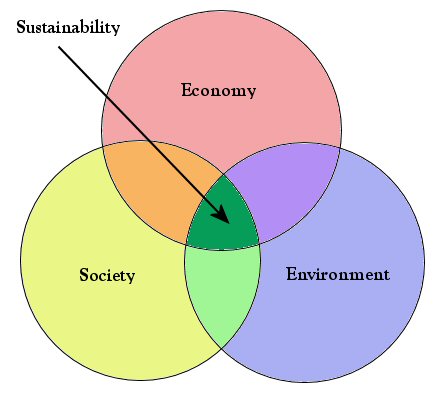Sustainability, or sustainable living, refers to a lifestyle that attempts to minimise the impacts of an individual on the Earth’s natural resources. The most widely quoted definition of sustainability, forming part of the concept of sustainable development, is that of the Brundtland Commission (1987) – “sustainable development is development that meets the needs of the present without compromising the ability of future generations to meet their own needs”. This definition has often been criticised as vague. In 1996 Herman E. Daly (author of Beyond Growth: The Economics of Sustainable Development) helpfully defined ‘sustainable development’ more simply as “development without growth beyond environmental limits”.

Sustainability is based on two key concepts; inter-generational equity and intra-generational equity. The former, inter-generational equity, is the idea that future generations should have access to the same or greater resources as the current generation. The latter, intra-generational equity, supports the equal division of resources between members of the current generation.
It is widely recognised that sustainability requires a balance of ‘three pillars’ representing environmental, social and economic demands. These pillars have served as the basis for many sustainability standards and certification systems.
By Katherine Dalton, Action 21 Volunteer
